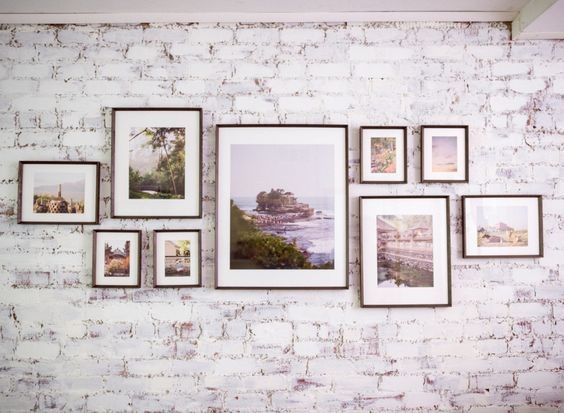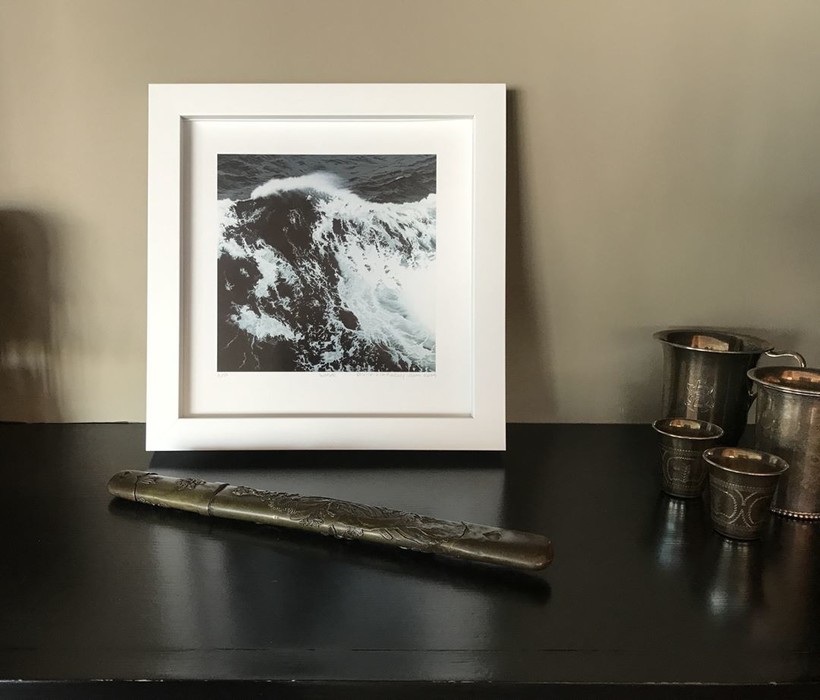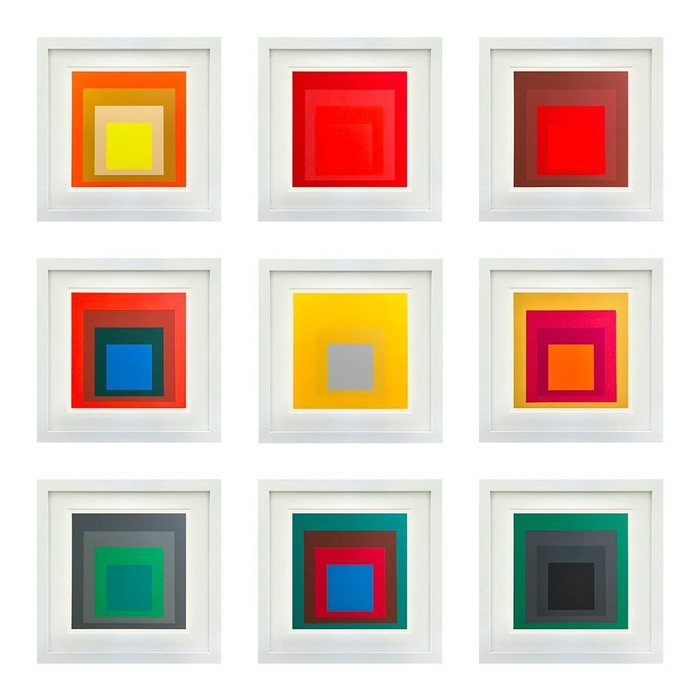

Glazing is the first line of defense for your artwork. It is the barrier between the inside of the frame and the outside world.
Usually, it is made of glass or acrylic and should be clear. This framing part is critical because it protects your artwork from air pollutants, dust, moisture, changes in temperature, and any physical damage.
Most ready-made frames from craft stores or big box stores like Target or Ikea have thin plastic or glass glazes, so these are often the types of frames people are most familiar with.
With online custom framing (or in some custom frame shops), you have a wider range of glaze options to choose from. Many of these glazes are made to help your art and photos look their best while still protecting them according to conservation standards.

As the name suggests, the standard glaze is the most basic option. It has a shiny, slightly reflective finish.
This glaze is a great alternative to regular picture frame glass, and it is still cheap.
It is just as thick as the glass it replaces, but it doesn't break as easily. This option will work best if you plan to hang your frame somewhere with little natural light or if your art isn't particularly rare or valuable.

How do you decide whether your picture frame's glazing should be made of glass or acrylic?
Glass is usually cheaper than acrylic, it doesn't have static electricity that can attract dust, and it's harder to scratch. But glass also has some bad things about it.
Most of the cheaper ones have a green or blue tint that is easy to see, but acrylic is clear. Glass is also much heavier, harder to handle, and more fragile than acrylic.
At Poppins' shop, we only use framer's grade acrylic glazing because it doesn't break easily, is easier to move, doesn't let heat or moisture get to the art, and has a high level of clarity. We, like many others in the framing business, mostly offer acrylic to our customers because it matches our museum-quality materials and is simply the best way to protect and stabilize your artwork. Plus, frankly, it is just the perfect option for shipping, as it is pretty resistant.
There are different kinds of acrylic glazes to choose from. Here, we'll talk about three more common ones you're likely to run into on your way to custom framing.

UV-protective glaze has all the same good qualities as regular framing-grade acrylic. However, it also has the important feature of being made to block up to 99 percent of UV rays.
Over time, UV rays will cause colors in artwork and photos to fade and paper to yellow, so this option makes sure that the things inside the frame stay in great shape. UV rays come from both the sun and indoor lights. These rays can fade and damage art.
Choose this type of glaze if you're framing valuable art, art that can't handle a lot of light (like craft paper and cardboard), or if you plan to hang the frame somewhere with a lot of natural light.
UV protection is a must when framing comic books, newspapers, or magazines.

You can find non-glare glaze as well. It has a matte coating on one side that works well to spread out the light that bounces off its surface. This finish is especially helpful if your room is well-lit because it makes your artwork easier to see.
Level's non-glare glaze also protects your art from damaging UV light, so you can rest easy knowing that you can fully appreciate your art and that it won't change color.
If you are framing something at home with one of our do-it-yourself framing kits, when you get to the step where you put this glaze into your frame, one side will be shiny and the other side will be matte. This matte finish is what cuts down on any glare or reflection that might be visible. The side with the shine should touch what's in the frame.
Note that the matte coating might make details and colors a little less clear or blurry. This effect will get worse as you move the glaze away from the art. This is a compromise between the other options, which look better.
Because of this, we recommend the UV or standard glaze when your frame has a mat and when you are float mounting your artwork with spacers. Otherwise, Non-glare is a nice option that lets you enjoy your artwork, photos, and posters all year long without worrying about glare.

Optium Museum Acrylic is the most fancy glaze on the market. It gives you the best of all worlds. It is in many of the best museums and art galleries in the world.
In addition to almost getting rid of reflections, it protects against 99 percent of UV rays, is anti-static, doesn't break or scratch, and doesn't have any of the other visual effects listed above. It's almost invisible whether it's right up against your art or a few inches away with spacers.
This can be a great investment if you are framing a picture or piece of art that you plan to keep out and enjoy for a long time. Also, if you want to frame something exceptional or expensive, this glaze is well worth the extra money.